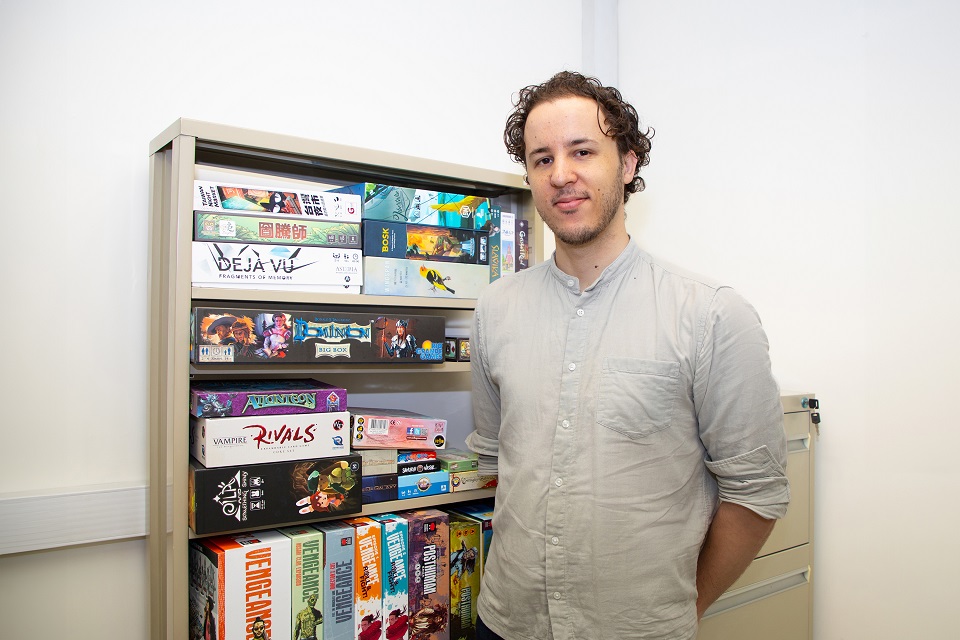Discover HKBU
Embracing geek chic: The comeback of board games
30 Apr 2024


Board games, a type of tabletop games, have made a comeback and the numbers are telling, with the global board game market expected to almost double in value, from US$19 billion in 2022 to $40 billion in 2028.
The resurgence of board game culture owes much to the continuous innovation of the industry and the savviness of the creative teams. Dr Johnathan Harrington, Assistant Professor in the Department of English Language and Literature, who has worked in a board game company in Malta, has an avid interest in creative play and the communities, production and design of board games. Dr Harrington now brings his passion into his research and teaching at HKBU, as he studies how board games have captured people’s imagination once again.
“To be geek is to be engaged,” says Dr Harrington, quoting from John A. McArthur, a professor famed for his work on digital sub-culture. With experience in testing games and talking with players before they are launched, he attests to how popular culture, such as the Marvel series, has given a new meaning to being “geek chic”.
“Board game players in the anglophone community used to be considered ‘geeky’, but the perception has changed to something positive, something ‘chic’, ‘niche’ and intellectual over the last 10 years.”


Board games as social lubricants
Dr Harrington teaches Virtual Storytelling which incorporates storytelling, narrative research and elements of game design. His current research focuses on the Asian urban city players and their behaviours, especially in Hong Kong, Japan, Taiwan, and South Korea. In Hong Kong, he notes that the board game communities have filled up the void left by the internet cafes. “Board games have become social lubricants that facilitate interactions across all ages and gender. This was the case especially during the pandemic when people preferred socialising in small groups. In fact, board games in Asia have evolved into an effective platform for people to meet up, mingle or even set up first dates!”
Research about games has shown that, contrary to popular belief, some of the highest grossing games are played by middle-aged women rather than teenage men. For board games, Dr Harrington sees room for further research into the demographics of the players. He highlights how some board games, such as live action role-play game which has exploded in popularity over the last few years, require players of a mixed demographics.
“People are inherently playful and compared to video games, board games are often more socially engaging. The gaming landscape has changed a lot over the past 20 years, and there is untapped potential to engage players outside of the so-called ‘geeky’ population.”
A synergy of AI and human ingenuity
As to the million-dollar question of how artificial intelligence would impact the board game industry, Dr Harrington is quick to point out the human element is indispensable in designing the games and engaging the players. “AI is an effective tool for preparing prototypes and facilitating the pitching process, but we still require people to have creative control.”
Last but not least, Dr Harrington sees the transdisciplinary teaching and learning environment at HKBU as offering students a comfortable space for trial and error, as they hone their design and storytelling skills.